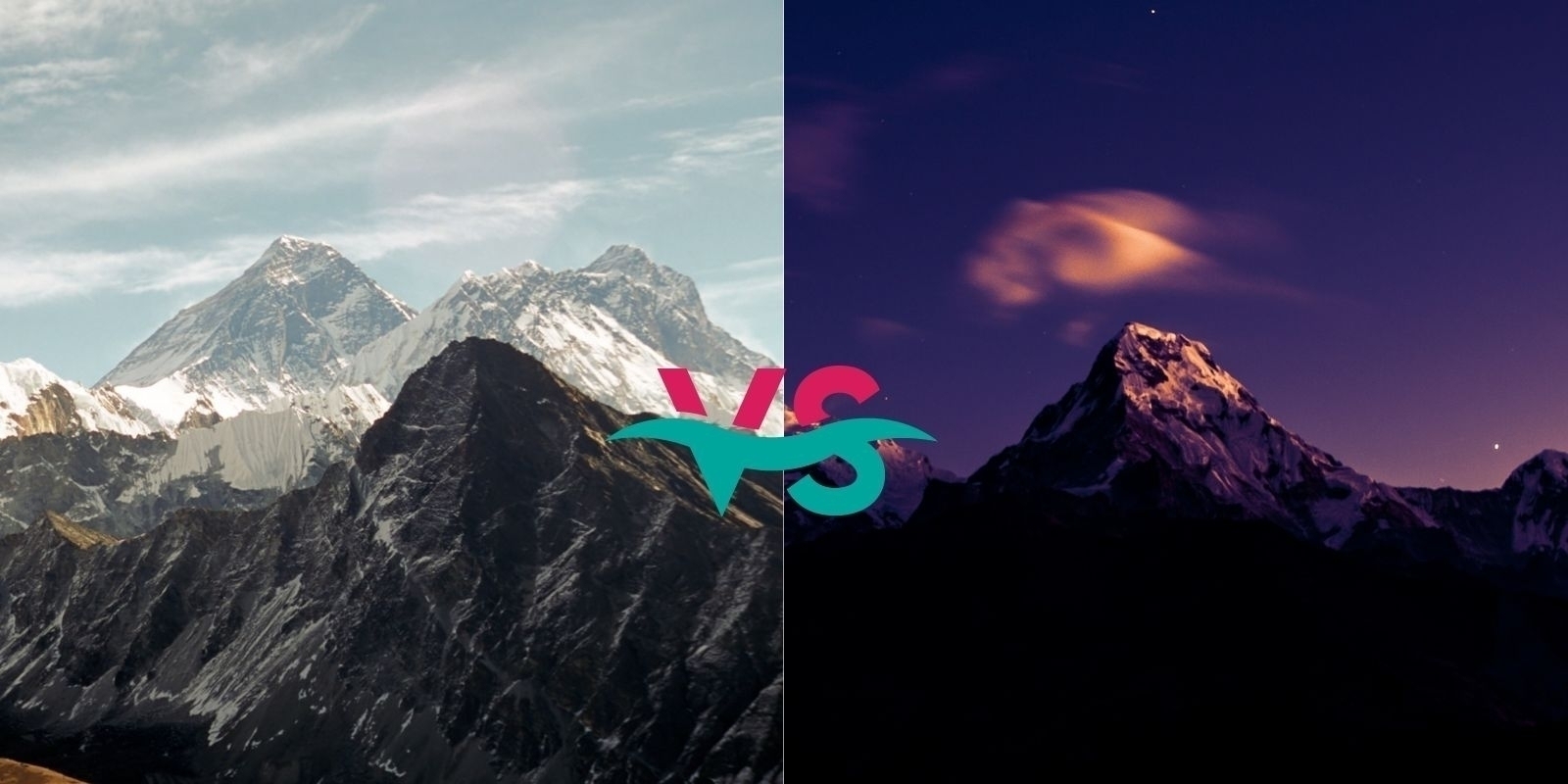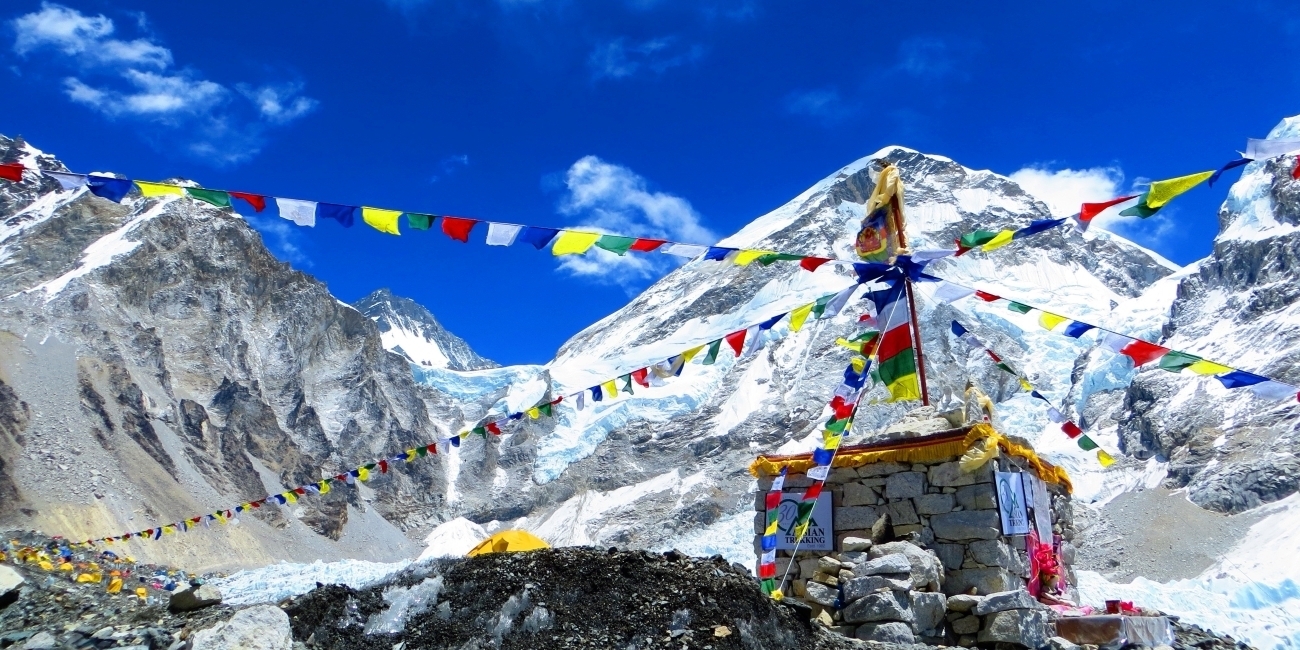
Both the Everest Base Camp trek and the Annapurna trek are challenging and require physical fitness and endurance. However, the difficulty level can vary depending on various factors.
In terms of altitude, Everest Base Camp is higher than Annapurna. The Everest Base Camp trek takes you to an altitude of 5,364 meters (17,598 feet), whereas the highest point in the Annapurna Circuit trekis Thorong La Pass at 5,416 meters (17,769 feet). The higher altitude of Everest Base Camp makes it more challenging in terms of acclimatization and altitude sickness.
On the other hand, the Annapurna Circuit is a longer trek, usually taking around 15-20 days to complete, while the Everest Base Camp trek typically takes around 12-14 days. The longer duration of the Annapurna trek means more sustained physical exertion over a longer period.
Additionally, the terrain and weather conditions also differ between the two treks. The Everest Base Camp trek involves steep ascents and descents, rocky paths, and the Khumbu Icefall section. The Annapurna Circuit trek includes a variety of landscapes, from lush valleys to high mountain passes.
Overall, both treks require a good level of fitness, mental determination, and preparation. It's important to consult with experienced trekking guides or tour operators who can provide detailed information and advice based on the current conditions and your personal capabilities.
ThePoon Hill trek, also known as the Ghorepani Poon Hill trek, is a popular short trek in the Annapurna region of Nepal. It is typically completed in 4-5 days, although the duration can vary depending on the trekker's pace and itinerary.
The standard route for the Poon Hill trek starts and ends in Nayapul, a village located about an hour's drive from the city of Pokhara. From Nayapul, trekkers usually follow a well-marked trail that passes through picturesque villages like Tikhedhunga and Ghorepani before reaching the famous viewpoint of Poon Hill.
The trek to Poon Hill itself is relatively short, usually taking about 2-3 hours to ascend from Ghorepani. The early morning hike to Poon Hill is popular because it offers stunning panoramic views of the Annapurna and Dhaulagiri mountain ranges, especially during sunrise.
After enjoying the sunrise view from Poon Hill, trekkers usually return to Ghorepani for breakfast and then continue their descent towards Tadapani, Ghandruk, or other nearby villages before eventually making their way back to Nayapul.
Overall, the Poon Hill trek is a rewarding and accessible option for those looking to experience the beauty of the Annapurna region within a relatively short time frame.
The Poon Hill trek is considered to be a moderate-level trek, suitable for individuals with a reasonable level of fitness. It is often recommended for beginners or those with limited trekking experience.
While it is not as physically demanding or high in altitude as some of the longer treks in the Annapurna region, it still requires a certain level of fitness and preparation. The trek involves ascending and descending on trails that can be steep at times, especially during the sections leading up to Ghorepani and Poon Hill. However, the overall duration of the trek is relatively short, making it more manageable for many trekkers.
The daily walking hours during the Poon Hill trek are typically around 4-6 hours, with some variations depending on individual pace and itinerary. The trails are generally well-maintained and well-marked, and there are teahouses and lodges available for accommodation along the route.
Altitude-wise, the highest point of the Poon Hill trek is the viewpoint at Poon Hill itself, which stands at an elevation of 3,210 meters (10,532 feet). While altitude sickness is not a major concern at this height, it's still important to practice proper acclimatization and take necessary precautions.
Overall, with adequate preparation, including physical training and acclimatization, the Poon Hill trek can be enjoyed by trekkers with a moderate fitness level. It's always advisable to consult with experienced trekking guides or tour operators for detailed information and advice based on the current conditions and your personal capabilities.
Yes, the Annapurna Circuit trek is still worth it and remains one of the most popular and breathtaking treks in Nepal. Despite some recent changes and developments in the region, the Annapurna Circuit continues to offer stunning landscapes, diverse cultural experiences, and a sense of adventure.
While a road has been constructed in certain sections of the Annapurna Circuit, particularly from Besi Sahar to Jomsom, the trek still retains its natural beauty and unique charm. The road has made access to some parts of the trek easier and has allowed for alternative transportation options if needed. It has also brought some modern amenities and convenience to the local communities along the route.
The Annapurna Circuit trek takes you through a variety of landscapes, including lush valleys, terraced fields, rhododendron forests, and high mountain passes such as Thorong La. Along the way, you'll encounter charming villages, diverse ethnic communities, and ancient monasteries, offering a rich cultural experience.
The trek offers breathtaking views of majestic mountains such as Annapurna, Dhaulagiri, Manaslu, and more. The scenery is awe-inspiring, and reaching Thorong La Pass at an altitude of 5,416 meters (17,769 feet) is a rewarding achievement for many trekkers.
While the construction of the road has brought some changes to the trek, it has also allowed for more flexibility in itinerary planning. Trekkers can now choose to skip certain sections by taking transportation when necessary, allowing for a shorter or more customized trek if desired.
In conclusion, despite the changes brought about by the road construction, the Annapurna Circuit trek still offers a unique and unforgettable experience. The stunning landscapes, cultural encounters, and the sense of accomplishment make it a worthwhile adventure for trekkers seeking to explore the beauty of the Annapurna region.
Annapurna Base Camp Trek for Beginners: A Comprehensive GuideAre you an adventurous soul seeking a thrilling trekking experience amidst the breathtaki...

The Annapurna Circuit Trek is a mesmerizing adventure that takes trekkers through some of the most awe-inspiring landscapes in the world. Located in N...

If you've ever dreamt of immersing yourself in the grandeur of some of the world's tallest peaks, the Everest Base Camp trek in Nepal offers...
